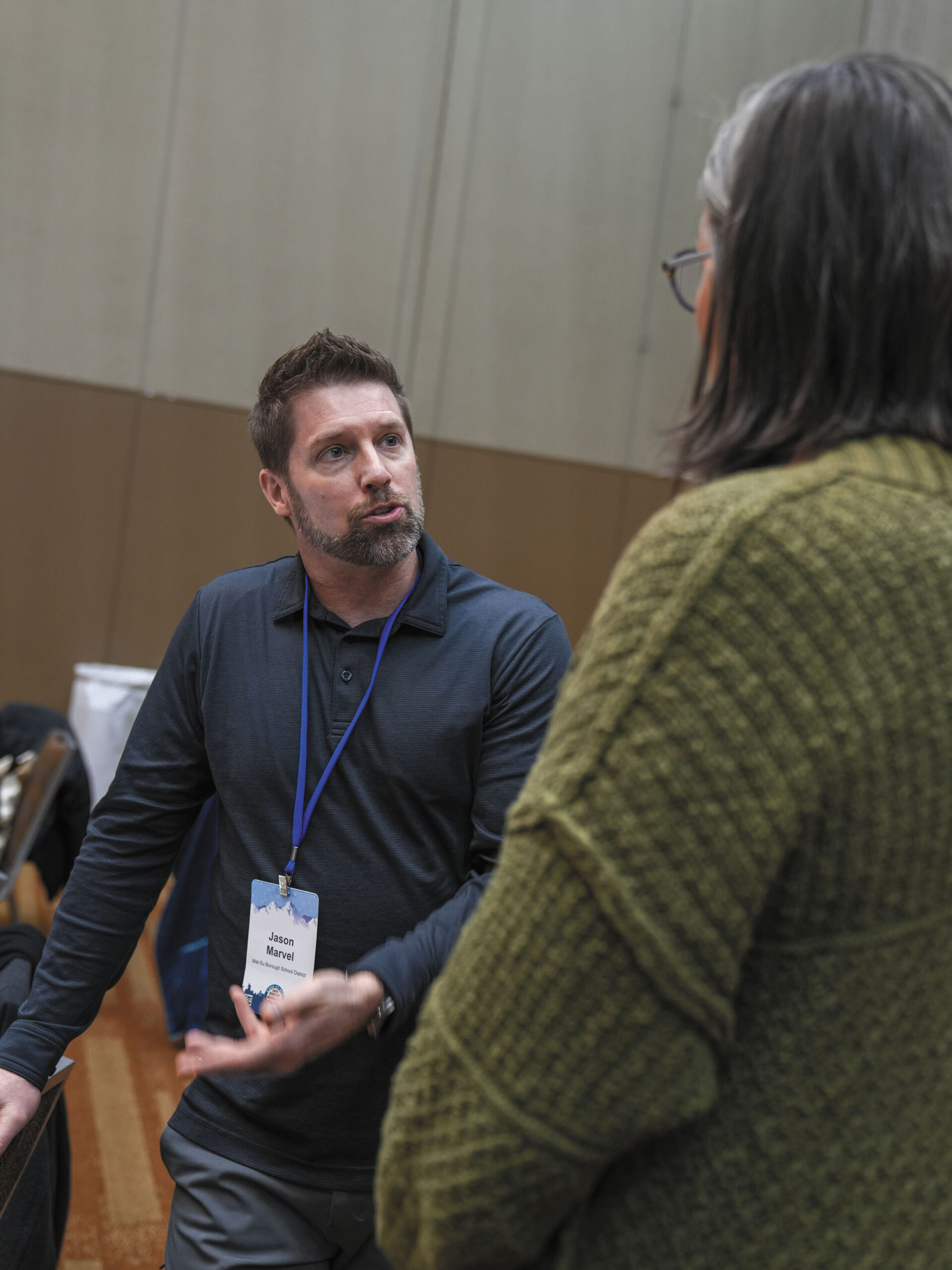The Alaska School Leadership Academy

Alaska is a unique state. It is the largest geographically, but with the third smallest population. It has many very rural, remote school districts—some without good access to high-speed internet—along with an extremely diverse student population. Those elements pose obvious challenges to our schools, especially at a time when we’ve lost our competitiveness in the education job market because of stagnant salaries, inadequate retirement benefits, and lower investment in public education. With schools all over the country experiencing staff shortages, we’ve faced challenges in attracting school leaders here. In recent years, some of our most remote districts experienced annual principal turnover rates of almost 40%.
But we also know that principals don’t stay in their jobs because of the money. When I asked some veteran leaders why they remain in the position, many mentioned a coaching and mentoring program previously run by the state department of education that provided key support early in their careers. Unfortunately, the state cut the program, which meant Alaska went for about a decade without any kind of focused support for new leaders outside of individual school districts.
That is until 2018, when the Alaska School Leadership Academy (ASLA) was created. Its purpose? To play a pivotal role in nurturing new school administrators in the first or second year of their careers. ASLA helps to address the distinct needs of Alaskan schools and has evolved into a dynamic and comprehensive training ground for new administrators. What began as a small program with nine mentors guiding 25 new administrators has blossomed into one that now has more than 60 mentors and almost 120 mentees this school year.
Three Pillars of Support
The program, which is run by the Alaska Council of School Administrators with support from the state department of education, is built on three pillars of support: professional mentoring, professional networking, and advancing leadership skills. These pillars are structured to provide a comprehensive understanding of school leadership while addressing the specific challenges that schools in Alaska face.

- Professional mentoring. ASLA partners all new administrators with a dedicated, vetted, and experienced mentor who helps build the capacity of the new school leader. These matches are based on mentors’ individual experiences, and they are paired with mentees working in similar school environments. Mentors and mentees are expected to meet biweekly for a minimum of 30 minutes; however, many mentors report meeting more frequently or for longer sessions. Topics of conversation during these meetings range from building climate and culture to leading schoolwide change.
- Professional networking. Recognizing the unique challenges faced by Alaskan schools, particularly with the expansive geography and potential for isolation, ASLA places a strong emphasis on providing in-person networking opportunities for program participants three times throughout the year. ASLA’s most recent in-person event was held in January at the Alaska RTI/MTSS Effective Instruction Conference in Anchorage. There, ASLA participants networked with colleagues, discussed the status of their goals, and learned techniques for building a positive school climate and culture in their buildings. While individual school districts are responsible for covering travel costs associated with attendance, ASLA pays the registration fees for mentees. Participants attending these events consistently report how much of a positive impact in-person networking plays in their professional learning, and they appreciate the opportunity to work closely with experienced educators and administrators.
- Advancing leadership skills. ASLA offers participants the opportunity to join multiple book studies and educational webinars throughout the school year. Book studies are often led by authors and are selected based on current topics and trends in education. Live webinars include topics routinely identified by participants as high needs, including special education, advocacy, and ethics, as well as topics identified by current trends, such as a focus on the new Alaska Reads Act in most recent years. Participants say they appreciate the chance to engage in coursework on topics such as school management, building climate and culture, and navigating challenging conversations.
Ultimately, what we want to do is set these principals and assistant principals (because we’re also working with aspiring principals) up for success. To understand what their needs are, we complete needs assessments, then we combine that information with what we know about research-based best practices.
Rave Reviews From Participants

Over the years, we’ve received positive feedback from academy participants. Here are just two of the many wonderful comments they regularly share with us:
“The value of being part of a network of colleagues who encourage and support you on many different levels and many different aspects of this incredibly challenging time in education is worth its weight in gold.”
“It was an incredible opportunity to learn from and connect with other leaders around the state. The additional speakers and professional development were fantastic, relevant, and career-guiding.”
An impressive 95% of participants would recommend the academy to other early career principals. Superintendents are also highly supportive, so much so that our two largest districts—Anchorage and Mat-Su—decided that the program was of such high quality and producing such positive results that they’ve joined our effort after running their own programs for years. That’s a high compliment.
Our mentors report that they feel they are adding value by providing guidance and support to new Alaskan administrators, and the majority return every year to continue participating.
Reducing Principal Turnover
The biggest impact that ASLA will have on students comes from reducing turnover among school leaders. That decrease stabilizes schools and promotes school success and ultimately increases student outcomes. I like to use the term “return on investment.” That return has been huge in Alaska, and I’m pleased that our partners at the state department of education see that, and that our school districts see it as well.
While the academy has made significant strides in enhancing education in our state, challenges persist. Alaska’s unique geography, diverse cultures, and the ongoing need for resources present ongoing hurdles. We recognize the need for continued adaptation and evolution to address these challenges effectively.
But given our success over the past six years, we believe we have something to offer other states, especially as they address the shortage of high-quality school leaders and support those new to the profession. The academy’s emphasis on leadership, cultural sensitivity, and continuous improvement offers valuable lessons for educators and leaders everywhere, reminding us that education is a dynamic and ever-evolving journey toward a brighter future.
Lisa S. Parady, JD, EdD, is the executive director of the Alaska Council of School Administrators.
